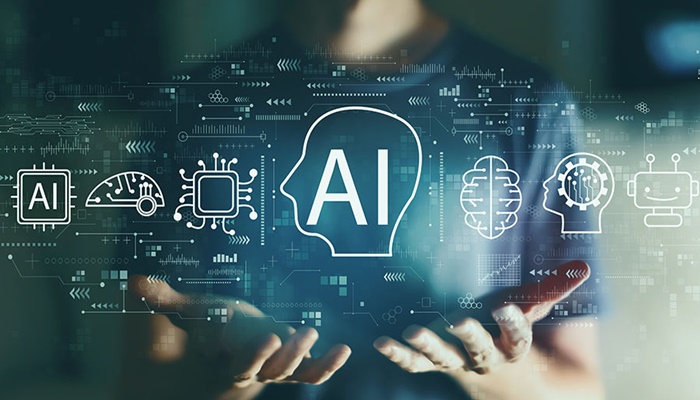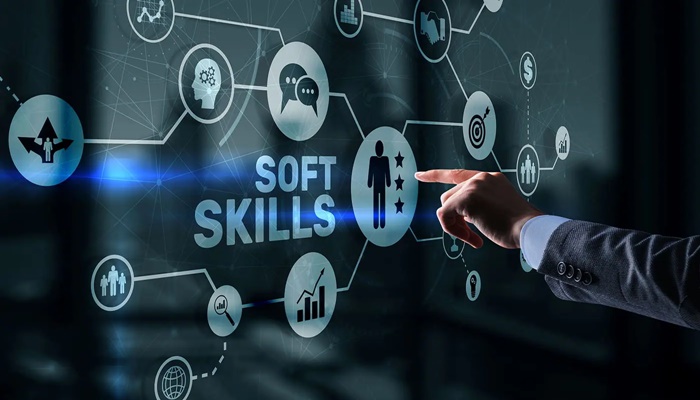A sobering reality confronts the business world: although nearly all companies are investing in AI, a mere 1% believe they have achieved maturity. In other words, AI is not yet fully embedded in workflows or delivering tangible business outcomes. Despite billions spent on Generative AI, according to Capgemini, only 24% have integrated it across most functions, implying that 76% are not yet at scale.
Enter Agentic AI – a new chapter in AI evolution. These systems possess autonomy and goal-directed behaviour. Unlike today’s reactive tools that require prompts, Agentic AI agents can plan, adapt, and execute tasks across workflows and systems with minimal human intervention. They integrate reasoning with process automation, undertaking structured, outcome-oriented work.
What makes this shift so powerful is its dual impact. Agentic AI not only enhances customer experience (CX) but also fundamentally transforms how employees work. This combination triggers a cascade effect across the organisation. From first-hand experience developing proof-of-concepts (PoCs) for internal processes such as incident management, I’ve witnessed how Agentic AI elevates both employee experience (EX) and, consequently, customer outcomes. Never before have EX and CX been so deeply intertwined – gains in one now fuel progress in the other.
The Internal Revolution: Enhancing Employee Experience
The most meaningful transformation starts from within. Agentic AI enables a goal-driven approach, where AI acts on behalf of the human. This moves beyond rule-based automation. These agents adapt to changes, learn from outcomes, and make independent decisions within defined parameters.
Transforming Incident Management
We recently assisted a client in creating a PoC (and are now developing an MVP) for a Major Incident Management process. Major incidents can inflict significant revenue loss and reputational damage on organisations. The goal of this Agentic AI solution is to reduce the time to root cause identification and resolution for P1 and P2 incidents, thereby safeguarding revenue and minimising the impact on customers and employees. While the work is ongoing and full details remain confidential, early indications suggest considerable benefits.
Organisations can expect the following benefits from such a solution:
Technical Gains
- Quicker detection and response
- Consistent troubleshooting
- Retention of institutional knowledge
- Ability to process tasks in parallel
Efficiency Improvements
- Reduced mean time to resolution (MTTR)
- 24/7 performance without fatigue
- Automated documentation
- More effective deployment of human resources
Business Impact
- Improved experiences for both customers and employees
- Lower operational costs
- Reduced risk
Beyond incident management, Agentic AI is being implemented across other internal domains. Vodafone’s hybrid GenAI strategy is reputed to be unlocking efficiencies in network management, with agents like VINA supporting autonomous operations. In collaboration with Google Cloud, Vodafone has developed GenAI tools for network automation, including image-based site assessments for solar panel installations at RAN sites.
In partnership with ServiceNow, Vodafone is apparently also deploying Agentic AI to enhance customer service, enabling telecom-specific agents to anticipate and manage service interruptions through rapid analysis and proactive measures. This internal intelligence supports employees while delivering value to end customers.
Salesforce research indicates 79% of service organisations investing in AI record cost/time savings and implies that customer service agents feel empowered by AI when it works alongside them, enhancing their performance. Rather than replacing jobs, these systems remove repetitive tasks, enabling teams to focus on strategic initiatives and meaningful customer engagement.
The Customer Experience Cascade Effect
The real power of internal Agentic AI lies in its cascading effect on customer experience. When internal processes become more efficient, responsive, and intelligent, customers inevitably benefit through improved service reliability, faster resolution times, and more proactive support.
The Cascade in Action
Consider incident management. Faster internal resolution directly enhances service stability. Automated escalation reduces downtime and wait times. Predictive issue detection allows businesses to inform customers of problems before they become apparent.
Vodafone invested £140m in SuperTOBi (the latest generation of its TOBi chatbot), a GenAI-powered assistant built on Microsoft Azure OpenAI’s Agent Copilot. It assists human agents with complex queries, enhancing response times and the quality of answers. Vodafone UK is also trialling AI tools that assess the success of customer calls, creating ‘super agents’ who improve with each interaction.
Companies such as The Adecco Group, BACA Systems, OpenTable, Saks, and Wiley are also reported to be deploying Agentic solutions.Wiley, for example, reported a 40% improvement in self-service and resolution efficiency with Agentforce Service Agents over its previous chatbot.
This supports a broader shift towards anticipatory service. Customers increasingly expect businesses to predict and resolve issues proactively. Agentic AI makes this scalable.
Connected Internal and External Agents: Orchestration Is the Next Step
The future lies in coordinating multiple agents across internal and external journeys. These agents leverage large language models (LLMs) to analyse and understand full context, make decisions, and act autonomously.
A Framework for Orchestration
Agentforce’s Atlas Reasoning Engine is one such model. It can interpret intent, identify the necessary data and actions, and complete tasks without further prompting.
Typical orchestrations could include:
- Detection and Response: Agents anticipate and manage service disruptions.
- Human Handover: When escalation is required, full context is seamlessly transferred.
- Continuous Learning: AI improves future decisions through each interaction.
Some Real-World Examples
Over 10,000 autonomous agents were deployed at Dreamforce 2024 to solve business challenges. Examples included Engine reducing case handling times by 15%, 1-800Accountant resolving 70% of chats autonomously during peak tax weeks, and Grupo Globo increasing retention by 22%.
Telcos such as Telkomsel, Vodafone, and Lumen are also believed to be using Microsoft 365 Copilot and other tools to deliver integrated customer support across departments.
Lessons Learned from the Field
Deploying Agentic AI demands a new mindset. Despite widespread enthusiasm, most organisations have yet to realise business value from GenAI. And Agentic AI is quickly upon us.
Here’s what successful teams do differently:
- Start with well-defined processes: focus on deterministic, high-volume tasks with measurable success metrics.
- Retain human oversight: employ security and compliance frameworks to ensure safety and mitigate risks.
- Emphasise change management: resistance, particularly among long-serving staff, is common. Training and clear communication are essential.
You need to think about how to orchestrate a lot of different AI agents at scale in an enterprise environment. This requires robust governance frameworks and clear role-based access controls.
Preparing for the Agentic Future: Strategy Over Scale
Agentic AI is gaining momentum. Organisations ready to embrace Agentic AI should begin with strategic preparation rather than rushing into implementation. Organisations should adopt a strategic approach:
- Pilot First: Vodafone and Google Cloud’s March 2024 hackathon are reported to have yielded 13 real-world use cases developed by engineers with limited AI experience.
- Invest in Platform capabilities: with pre-built agent skills
- Prioritise Business Outcomes: Success lies not in automating tasks but in reimagining how work is done. This is not an efficiency play but rather a transformation play.
According to Slack’s latest Workforce Index, AI usage has jumped by 233% over the past six months. 40% have engaged with AI agents. The adoption curve is accelerating rapidly, making early action increasingly important.
Some organisations are even aiming to establish ‘zero-FTE’ departments – functions fully operated by agents. However, I believe that the real opportunity lies in augmentation and human-AI collaboration, not replacement.
Final Thoughts: The Competitive Edge of Early Action
Agentic AI represents more than a technological step forward and an incremental improvement in automation — it’s a fundamental shift toward autonomous, intelligent systems that can transform both employee and customer experiences. Organisations that master this problem-first approach consistently outperform their solution-obsessed counterparts in delivering meaningful transformation.
The evidence is compelling: those who embrace this change early will be best positioned to lead. When AI agents can converse with customers, reason through decisions, and resolve tasks in real time, the opportunity becomes tangible.
The future is not about managing AI but collaborating with AI agents that think, act, and optimise in real time. By starting with clearly defined internal processes, building robust governance frameworks, and focusing on human-AI collaboration rather than replacement, organisations can unlock the transformative potential of autonomous agents.
This does not necessitate massive investment or upheaval. With autonomous agents running continuously, processes that once took weeks can now be completed in days. The competitive edge belongs to those who start now, learn fast, iterate rapidly, and build the organisational capabilities that will define the future of work and customer experience.
The Agentic AI awakening has begun. Will you lead the charge, or follow?
Sources and Bibliography
Primary Research and Industry Reports:
- McKinsey Digital. (2025). “Superagency in the Workplace: Empowering People to Unlock AI’s Full Potential at Work.” McKinsey & Company. 28 January 2025.
- McKinsey Digital. (2025). “Seizing the Agentic AI Advantage.” McKinsey & Company. March 2025.
- McKinsey Digital. (2025). “The State of AI: How Organizations are Rewiring to Capture Value.” McKinsey & Company. 12 March 2025.
- McKinsey Digital. (2025). “Agentic AI and the Future of Customer Experience.” McKinsey & Company. January 2025.
- McKinsey Digital. (2025). “Building and Managing an Agentic AI Workforce.” McKinsey & Company. January 2025.
Technology Implementation and Case Studies:
- Salesforce. (2024). “Salesforce’s Agentforce Is Here: Trusted, Autonomous AI Agents to Scale Your Workforce.” Salesforce Press Release. 17 December 2024.
- Salesforce. (2025). “Agentforce 3 to Solve the Biggest Blockers to Scaling AI Agents.” Salesforce Press Release. 23 June 2025.
- Salesforce. (2024). “Introducing Agentforce 2.0: The Digital Labor Platform for Building a Limitless Workforce.” Salesforce Press Release. 17 December 2024.
European Company Case Studies:
- Vodafone Group. (2025). “Vodafone Forecasts ‘Big Bang’ as Agentic AI Starts to Transform Network Ops.” TelcoTitans. 23 April 2025.
- Vodafone Group. (2024). “Meet SuperTOBi – Vodafone’s New Generative AI Virtual Assistant.” Vodafone Press Release. 2024.
- Vodafone Group. (2025). “Vodafone Business and ServiceNow Collaborate to Enhance Customer Experience with AI-Powered Service Automation.” Vodafone Press Release. 2025.
- Google Cloud. (2024). “How Vodafone is Using Gen AI to Enhance Network Lifecycle.” Google Cloud Blog. 22 November 2024.
- Vodafone UK. (2024). “How Vodafone is Using AI to Shape the Next Generation of Customer Service.” Vodafone UK Newscentre. 22 October 2024.
Industry Analysis and Trends:
- Omdia. (2025). “MWC 2025: AI and Network APIs Pick Up Pace, and Agentic AI Permeates the Show.” Omdia Research. 17 March 2025.
- Constellation Research. (2024). “Salesforce Dreamforce 2024: Takeaways on Agentic AI, Platform, End of Copilot Era.” Constellation Research. 17 September 2024.
- CIO Magazine. (2025). “Salesforce Unveils Agentforce to Help Create Autonomous AI Bots.” CIO. 23 January 2025.
- SiliconANGLE. (2024). “Salesforce Launches Agentforce AI Agent Platform into General Availability.” SiliconANGLE. 30 October 2024.
Note: In the spirit of the human-AI collaboration discussed in this article, AI tools were used to assist with research, fact-checking, and content structuring for this article. All insights and conclusions reflect the author’s professional experience and expertise.




















